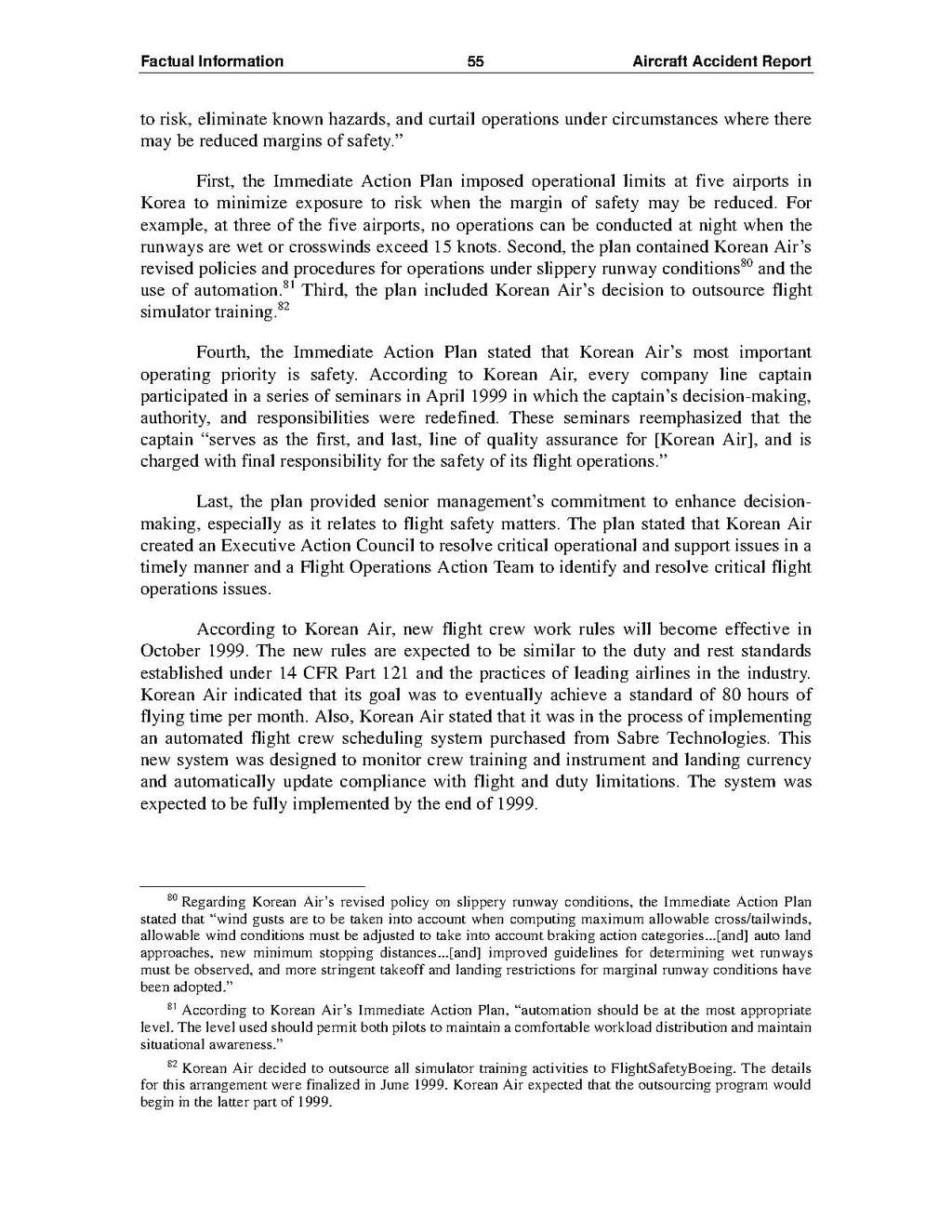to risk, eliminate known hazards, and curtail operations under circumstances where there may be reduced margins of safety."
First, the Immediate Action Plan imposed operational limits at five airports in Korea to minimize exposure to risk when the margin of safety may be reduced. For example, at three of the five airports, no operations can be conducted at night when the runways are wet or crosswinds exceed 15 knots. Second, the plan contained Korean Air's revised policies and procedures for operations under slippery runway conditions[1] and the use of automation.[2] Third, the plan included Korean Air's decision to outsource flight simulator training.[3]
Fourth, the Immediate Action Plan stated that Korean Air's most important operating priority is safety. According to Korean Air, every company line captain participated in a series of seminars in April 1999 in which the captain's decision-making, authority, and responsibilities were redefined. These seminars reemphasized that the captain "serves as the first, and last, line of quality assurance for [Korean Air], and is charged with final responsibility for the safety of its flight operations." Last, the plan provided senior management's commitment to enhance decisionmaking, especially as it relates to flight safety matters. The plan stated that Korean Air created an Executive Action Council to resolve critical operational and support issues in a timely manner and a Flight Operations Action Team to identify and resolve critical flight operations issues.
According to Korean Air, new flight crew work rules will become effective in October 1999. The new rules are expected to be similar to the duty and rest standards established under 14 CFR Part 121 and the practices of leading airlines in the industry. Korean Air indicated that its goal was to eventually achieve a standard of 80 hours of flying time per month. Also, Korean Air stated that it was in the process of implementing an automated flight crew scheduling system purchased from Sabre Technologies. This new system was designed to monitor crew training and instrument and landing currency and automatically update compliance with flight and duty limitations. The system was expected to be fully implemented by the end of 1999.
- ↑ Regarding Korean Air's revised policy on slippery runway conditions, the Immediate Action Plan stated that "wind gusts are to be taken into account when computing maximum allowable cross/tailwinds, allowable wind conditions must be adjusted to take into account braking action categories...[and] auto land approaches, new minimum stopping distances...[and] improved guidelines for determining wet runways must be observed, and more stringent takeoff and landing restrictions for marginal runway conditions have been adopted."
- ↑ According to Korean Air's Immediate Action Plan, "automation should be at the most appropriate level. The level used should permit both pilots to maintain a comfortable workload distribution and maintain situational awareness."
- ↑ Korean Air decided to outsource all simulator training activities to FlightSafetyBoeing. The details for this arrangement were finalized in June 1999. Korean Air expected that the outsourcing program would begin in the latter part of 1999.
